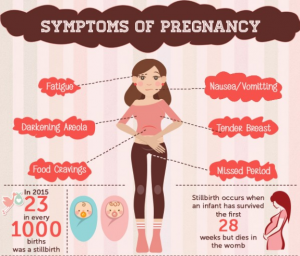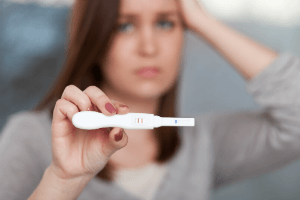Preeclampsia Awareness: Know the Symptoms & Causes

World Preeclampsia Day is celebrated on 22nd May annually to recognise and raise awareness about preeclampsia, a pregnancy complication. Preeclampsia in pregnancy, characterised by high blood pressure and organ damage, is a serious condition that demands attention, understanding, and effective management.
What is Preeclampsia?
Preeclampsia is a health condition during pregnancy that causes a sudden increase in blood pressure (hypertension) and is often accompanied by signs of damage to other organs, such as the liver and kidneys. It usually occurs after 20 weeks of pregnancy, though it can develop earlier, too.
People who have preeclampsia during pregnancy experience high blood pressure (higher than 140/90 mmHg) and may also have high protein levels in the urine. The condition can stress the heart and other organs, cause fluid build-up in the lungs, or affect the blood supply to the placenta, causing severe complications for the mother and baby.
Although the exact cause of preeclampsia is not known, it is believed to involve genetic, immune, and vascular factors.
What are the Risk Factors of Preeclampsia in Pregnancy?
Preeclampsia may be a more common condition in first-time pregnancies. While the exact causes are unknown, some common conditions that put one at a higher risk are:
- Preeclampsia in a previous pregnancy
- Chronic high blood pressure
- Kidney disease
- Expecting more than one baby
- Diabetes
- Obesity
- Autoimmune diseases
What are the Symptoms of Preeclampsia?
For most individuals, there might be no clear signs of preeclampsia. That said, some common preeclampsia symptoms that one might develop include:
- High blood pressure
- Headaches
- Protein in the urine
- Rapid weight gain caused by high fluid levels
- Shortness of breath
- Blurry vision
- Swelling in hands and face
- Abdominal pain on the right side
- Nausea or vomiting
- Affected liver function
While it is common to develop high blood pressure during pregnancy, it isn’t necessarily a sign of preeclampsia. Look for other symptoms and hypertension and consult a healthcare professional for an accurate diagnosis.
What are the Complications of Preeclampsia in Pregnancy?
Preeclampsia can result in various severe complications for the mother and the baby, including:
1. Premature birth: Preeclampsia may result in unplanned, premature birth before 37 weeks. A preterm baby is at a higher risk of developing breathing and feeding problems, vision or hearing problems, or growth restrictions. However, preterm treatment before delivery can help decrease these risks.
2. Restricted fetal growth: Preeclampsia in pregnancy majorly affects the blood supply to the placenta as it impacts the arteries. If the placenta doesn’t get enough blood, it affects the blood supply to the baby. As a result, the baby might not get enough nutrients and oxygen for development, hampering their growth in the womb.
3. Cardiovascular diseases: People suffering from preeclampsia may be at a higher risk of developing heart disorders. The risk gets even higher if they have a history of preeclampsia in previous pregnancies.
4. Other organ damage: Preeclampsia can also damage other organs, such as the liver, kidney, heart, lungs, or eyes. In some severe cases, it might also cause stroke or other injuries to the brain.
How is Preeclampsia Diagnosed?
Early detection and management of preeclampsia are crucial for the well-being of both the mother and the baby. If the pregnant woman has high blood pressure, healthcare professionals may order additional tests to determine signs of preeclampsia. These include-
- Blood tests: A blood test might be required to know if the liver and kidney are functioning properly.
- Fetal Ultrasound: The healthcare provider may recommend regular ultrasounds to closely monitor the baby’s growth. Doctors will check for the estimated baby weight and amount of fluid in the uterus.
- Nonstress test: This is a simple procedure to check how the baby’s heartbeat responds when it moves to determine its growth.
Preeclampsia is a serious condition that cannot be prevented. However, its risks can be better managed and reduced with early detection and consistent prenatal care. Proper diagnosis will allow the healthcare professional to monitor the mother and the baby to avoid complications.
How to Manage Preeclampsia?
Depending on the severity of the condition and how far along the pregnancy is, preeclampsia treatment and management options may include:
- Close Monitoring: Regular prenatal check-ups and monitoring of blood pressure and urine protein levels.
- Medications: The healthcare professional may prescribe medications to control hypertension.
- Early Delivery: If the condition is severe or the pregnancy is near-term, doctors might recommend preterm delivery to reduce risks.
World Preeclampsia Day serves as a reminder of the importance of awareness, education, and research into this potentially life-threatening condition. Preeclampsia in pregnancy is a serious condition that requires careful monitoring and management.
Talk to a healthcare provider to understand preeclampsia’s symptoms and risk factors and book blood tests with Dr Lal PathLabs.
FAQs
1. What is Preeclampsia Awareness Day?
May is preeclampsia awareness month, with World Preeclampsia Day being celebrated on May 22 to raise awareness for this serious pregnancy disorder.
2. Who is at high risk of preeclampsia?
While preeclampsia often occurs in first-time pregnancies, people with preeclampsia from a previous pregnancy are also at high risk.














